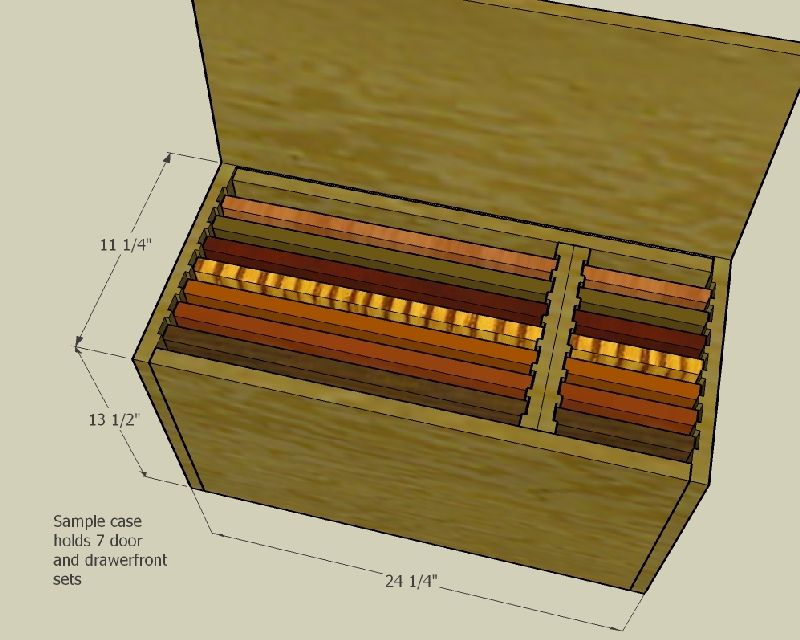Question
I'm wondering about switching to 16mm board stock for everything: case sides, tops, cab backs, drawer bottoms and sides - one thickness of board stock for shop inventory.
We've always used 3/4 ply for cabinet cases, and done various thicknesses over the years for the backs. I've just become aware that in Europe they seem to use 16mm melamine for everything. For example I noticed that for Blum tandems and tandembox parts the stock is optimally 16mm thick.
Now that we have a CNC router I am thinking about switching to 16mm plywood (sorry I hate melamine and particle board - dropped a cab I was nailing together on my toe and permanently mangled it in 1987 and have never forgiven melamine ever since!). We could nest all kinds of parts out of it and keep life a little simpler.
I used to think 16mm was a little thin, but if it is plywood and if we use solid ply tops and back that are 16mm, this make a pretty strong cube. Not to mention that we have come up with a way to nest fully rabbet jointed case parts all done on the flat table (no on-edge work), so our boxes really lock together well and there are no butt joints. All our cabinetry is very high end. Iím just a little concerned that all 16mm construction might be viewed in America as not high-end.
Forum Responses
(Cabinetmaking Forum)
From contributor J:
I use 16mm exclusively. Mainly for inventory reasons as you suggest. You said: "All our cabinetry is very high end, Iím just a little concerned that all 16mm construction might be viewed in America as not high-end." The only people that will notice that they are not 3/4" are other cabinetmakers. I have yet, in seven years, to have a single customer notice that they are 5/8.
I could also have the router cut a large square hole in the top of the base cabs (like a sink cut-out) which would still give the easier handling at install that you mention, and could be a little stronger than just stringers/rails.
Unless you are not a high volume shop there will be no real benefit to you in terms of inventory reduction. Your supplier is not likely to give you any extra discount, and I am certain you will always have a reason to keep a few sheets of 3/4 and 1/4 around the shop.
The shops that are using 16mm for all case parts do so because they are very high production. You can stack more 16mm sheets on a panel saw than 18mm sheets. Also the cost difference matters to them more; $5 a sheet times 100 sheets a day - that adds up at the end of the month. For the average custom shop that processes 50 sheets a week that $250 will not make any difference to your bid price.
Like most custom shops I use three material thicknesses; 18mm for case parts, 15mm for drawer sides, and 6mm for backs and drawer bottoms. It is true that few clients would notice the difference in the case parts thickness, but I print in my marketing materials and proposals and I mention in my personal pitch that we always use 3/4" materials and that they should be aware that many of the large companies sold in big box stores are using thinner, lower quality materials. I have had clients mention in the following meetings that they noticed the differences in the competitorsí products after I made them aware. This also goes for joinery, hardware, and even the types of screws we use.
As for nesting, I nested on CNC before and now I do it on a panel saw. I do not see any difference at all in waste. The only real issue is that I process the 6mm first (these parts have no boring or routing). Then the 16mm drawer boxes are immediately assembled after they are cut. Next the 18mm parts are cut and by the time the saw operator is on the third sheet the drawer boxes are all finished and the workers all go back to banding, boring, and assembly. The result is all employees are continuously productive and there is no change over. If you are nesting on a CNC the logistics should work out the same.
There is a significant difference in weight and slipperiness in ply vs. melamine. This does translate into a minor advantage over time for plywood - less strain on backs and bodies and fewer items slipping out of hands (like the cab case that got my toe). With melamine you always get the moisture bubbles when the customer gets a leak or a bottle turns over in the cabinet. These never go down when they are dry.
